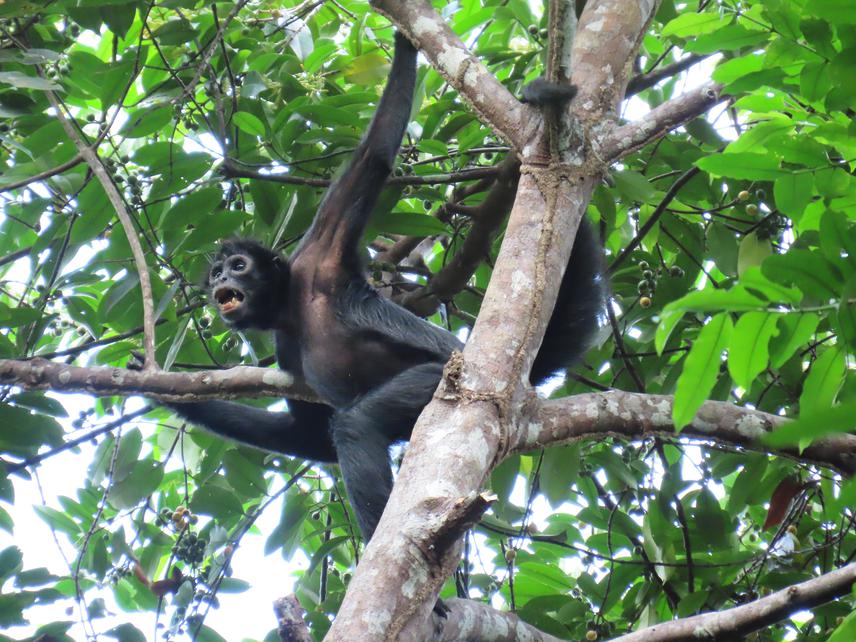Alma Hernández
Ateles fusciceps is a poorly known species, particularly in Colombia. Working in collaboration with communities, the government, and private landowners, this project will greatly improve our understanding of the species’ true conservation status. By combining the most extensive distribution surveys to date and robust population density estimates from three sites, our results will provide a detailed picture of the species’ status and will be invaluable to current and future conservation work, not least a new Red List assessment. We will promote the conservation of forests with local communities to benefit nature and the sustainable use of natural resources.

Individual Colombian black spider monkey (Ateles fusciceps) in the forests of one of our study sites. © Alma Hernández.
This project will fill important gaps in our knowledge of the distribution and provide estimates of population size through comparative densities of A. fusciceps. It will also determine its conservation status and needs through community-partnered ecological research and threat analysis, fostering long term conservation partnerships. Our findings will help decision makers and stakeholders (including ourselves) to implement appropriate conservation actions for this species based on the national conservation action plan and build the capacity of communities to conserve biodiversity. This project will also produce data on, and help conserve, many other species, including primates such as: Alouatta palliata (VU), Aotus zonalis (NT), Cebus capucinus (VU), Saguinus oedipus (CR) and countless other species, their habitat, and the natural resources which sustain local communities and cultures. Specifically, we aim to:
• More accurately determine the actual area of occupancy of A. fusciceps in Colombia, through field visits to poorly sampled areas of the Colombian Pacific.
• Gather data and calculate robust population density estimates at three sites with different habitat characteristics and anthropogenic pressure (Ciénaga marimonda, Antioquia; San José del Palmar, Chocó; Alto Amurrupá, Risaralda).
• Train community members at each study site in research methodologies, to aid in data collection, generate employment opportunities (as field guides for researchers and in the future for tourists) and to promote long term sustainable participation and leadership in activities.
• Begin community conservation activities including environmental education, capacity building, and promotion of community led protected areas as implementation of key activities from the national action plan.
Header: Area selected for population census of Colombian black spider monkey (Ateles fusciceps). © Alma Hernández.